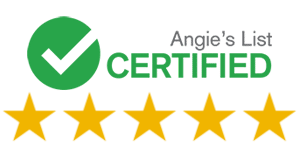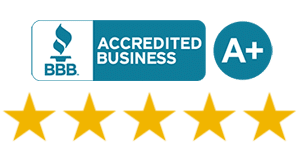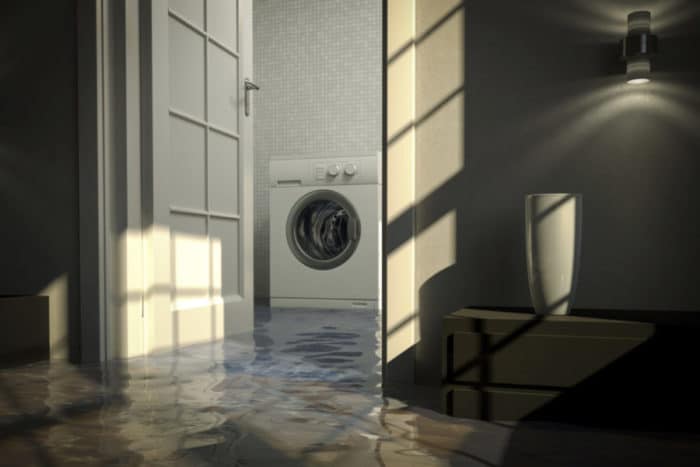Cleaning up a house after a flood can be a daunting and overwhelming task. Floods can cause extensive damage to your property, leaving behind debris, mud, and contaminated water. It’s important to take immediate action to prevent further damage and ensure the safety of your home and family.
Understanding the Risks Before you start the cleanup process, it’s important to understand the risks associated with flood damage. Floodwater can contain harmful bacteria, viruses, and other contaminants that can pose a serious health risk. In addition, standing water can weaken the structural integrity of your home and cause mold growth if not properly addressed. AllKlean specializes in flood clean ups an water removal in the Spokane, WA and Coeur D’Alene, ID areas.
Key Takeaways
- Take immediate action to prevent further damage and ensure safety.
- Understand the risks associated with flood damage before starting the cleanup process.
- Properly removing damaged materials, drying and disinfecting, and preventing mold growth are crucial steps in the cleanup process.
Understanding the Risks
Cleaning up after a flood can be a daunting task, and it’s important to understand the risks involved before you begin. Floodwater can contain a variety of contaminants, including viruses, bacteria, and other harmful substances. Exposure to these contaminants can lead to illness and other health problems, so it’s crucial to take the necessary precautions when cleaning up.
One of the biggest risks associated with floodwater is the potential for mold growth. Mold can begin to grow within 24-48 hours after a flood, and it can spread quickly if not addressed promptly. Mold can cause respiratory problems, allergic reactions, and other health issues, so it’s important to take steps to prevent its growth.
In addition to the health risks associated with floodwater and mold, there are also safety hazards to consider. Flooded homes may have structural damage that can make them unsafe to enter, and there may be electrical hazards to be aware of as well. It’s important to shut off the power to your home before entering, and to avoid touching any electrical equipment or power lines until a professional has deemed it safe to do so.
To protect yourself during the cleanup process, it’s important to wear personal protective equipment, including gloves, eye protection, and a mask. Long pants and sleeves can also help protect your skin from exposure to contaminants.
Overall, cleaning up after a flood can be a challenging and potentially dangerous task. By understanding the risks involved and taking the necessary precautions, you can help ensure the safety of yourself and your family.
Before You Start
Cleaning up after a flood can be a daunting task, but it’s essential to ensure that your home is safe and habitable. Before you start cleaning up, there are a few things you should do to ensure that the process goes smoothly.
First, make sure that the utilities in your home are turned off. This includes electricity, gas, and water. If you’re not sure how to turn off the utilities, contact your utility company for assistance.
Next, contact your insurance company to report the flood damage. They will likely send an insurance adjuster to assess the damage and determine the amount of coverage you’re entitled to. If you have flood insurance, be sure to let your insurance agent know.
Before you start cleaning up, take photos of the damage to your home and the belongings that were affected by the flood. This will help you document the damage for insurance purposes.
It’s also a good idea to create an inventory of the items that were damaged or destroyed in the flood. This will help you keep track of what needs to be replaced and will also be useful when filing an insurance claim.
Finally, make sure that you have the proper safety gear before you start cleaning up. This includes gloves, boots, and a mask to protect you from mold and other contaminants that may be present in the flood water.
By taking these steps before you start cleaning up, you can ensure that the process goes smoothly and that you’re able to get the help and support you need from your insurance company.
Safety Measures
Cleaning up after a flood can be dangerous, so it’s important to take safety measures to protect yourself. Here are some tips to keep you safe:
- Wear protective gear: Before you start cleaning up, put on protective gear, including rubber gloves, waterproof boots, and eye protection. If you’re working in an area with mold, wear a mask to avoid breathing in spores.
- Turn off the power: Before you start cleaning up, turn off the power to your home. This will prevent electrocution and other electrical hazards.
- Avoid standing water: Standing water can be contaminated with bacteria and other harmful substances. Avoid contact with standing water as much as possible.
- Use caution when using cleaning products: Some cleaning products can be hazardous if they come into contact with your skin or eyes. Read the label carefully before using any cleaning products, and follow the instructions.
- Dispose of contaminated items properly: Any items that have come into contact with flood water should be disposed of properly. This includes carpets, furniture, and other household items.
- Seek professional help: If you’re not sure how to clean up after a flood, or if you’re concerned about your safety, seek professional help. A professional cleaning service can help you clean up and disinfect your home safely.
By following these safety measures, you can protect yourself and your family as you clean up after a flood.
Initial Cleanup
When you return to your home after a flood, the first thing you should do is ensure your safety. Floodwater can be contaminated with sewage, chemicals, and other hazardous materials. Wear protective gear such as gloves, boots, and a mask to avoid contact with the water.
Once you have ensured your safety, the next step is to remove any debris, mud, silt, or dirt that may have accumulated in your home. Use shovels and buckets to scoop up the debris and dispose of it properly. Be sure to wear gloves and boots to protect your hands and feet.
If your home has standing water, use a pump to remove it. If you do not have a pump, you can use a wet/dry vacuum or a mop and bucket to remove the water. Be sure to dispose of the water properly.
After you have removed the debris and water, it is important to clean and disinfect your home. Scrub all surfaces with soap and water, and then disinfect with a bleach solution. Use a ratio of one cup of bleach to one gallon of water. Be sure to open windows and doors for ventilation while cleaning.
In summary, the initial cleanup after a flood involves ensuring your safety, removing debris and water, and cleaning and disinfecting your home. Use protective gear, shovels, buckets, and a bleach solution to clean and disinfect your home.
Removing Damaged Materials
After a flood, it is essential to remove all damaged materials from your home. This includes anything that has been soaked or damaged by water, such as carpet, drywall, insulation, doors, windows, upholstered furniture, mattresses, plaster, paneling, and any other damaged items. Here are some tips on how to remove these materials safely and efficiently:
- Carpet: If your carpet has been soaked by floodwater, it is best to remove it entirely. Cut it into manageable sections and roll it up for disposal. If you have a carpet pad, it should also be removed and discarded.
- Drywall: Floodwater can cause significant damage to drywall. It is best to remove any affected drywall as soon as possible to prevent mold growth. Use a utility knife to cut the drywall into manageable sections, and then remove it from the wall. Be sure to wear protective gear, such as gloves and a mask, to avoid inhaling dust and debris.
- Insulation: Wet insulation should be removed and discarded. It can be difficult to remove insulation from walls and ceilings, so it may be best to hire a professional to handle this task.
- Doors and Windows: If your doors or windows have been damaged by floodwater, they should be removed and replaced. This is especially important for exterior doors and windows, as they can compromise the security of your home.
- Upholstered Furniture and Mattresses: Upholstered furniture and mattresses that have been soaked by floodwater should be discarded. They can be difficult to clean and may harbor mold and bacteria.
- Plaster and Paneling: If your walls are made of plaster or paneling, they may need to be removed if they have been damaged by floodwater. Use a utility knife to cut the plaster or paneling into manageable sections, and then remove it from the wall.
- Other Damaged Items: Any other items that have been damaged by floodwater, such as electronics or appliances, should be discarded if they cannot be repaired.
Remember to wear protective gear when removing damaged materials from your home. This includes gloves, a mask, and safety glasses. If you are unsure about how to remove certain materials, it is best to consult with a professional.
Drying and Dehumidifying
After removing all the standing water and debris from your flooded home, it’s time to start the drying and dehumidifying process. This step is crucial to prevent further damage and the growth of mold and mildew. Here are some tips to help you dry out your home effectively:
- Open all the windows and doors to promote air circulation. Use fans to speed up the drying process. Place them in front of wet areas and point them towards the windows to blow the moist air outside. You can also rent high-velocity fans for more significant areas.
- Use a dehumidifier to remove excess moisture from the air. It will help prevent the growth of mold and mildew. Place it in the wettest areas of your home, such as the basement or the bathroom. Empty the water container regularly and clean the filter to ensure optimal performance.
- Consider renting a wet/dry vacuum to remove excess water from carpets, floors, and furniture. Use the vacuum’s wet setting to suck up the water and switch to the dry setting to remove any remaining moisture. Be sure to empty the vacuum’s container regularly and clean the filter to prevent clogging.
- If you have a large amount of water to remove, consider renting a wet/dry shop vac or a wet/dry shop vacuum cleaner. These powerful machines can handle large volumes of water and debris. Be sure to wear protective gear, such as gloves and goggles, when using them.
- Monitor the humidity levels in your home with a hygrometer. It should be between 30% and 50% to prevent mold growth. If the levels are too high, use a dehumidifier or open the windows to let the air circulate.
By following these tips, you can effectively dry out your flooded home and prevent further damage. Remember to be patient, as the drying process can take several days or even weeks, depending on the extent of the damage.
Cleaning and Disinfecting
Cleaning and disinfecting your home after a flood is essential to prevent the growth of mold and bacteria. Here are some steps you can take to clean and disinfect your home:
- Wear protective gear: Before you start cleaning, make sure you wear protective gear such as gloves, boots, and a mask to protect yourself from harmful contaminants.
- Remove standing water: If there is still standing water in your home, use a pump or a wet/dry vacuum to remove it. Make sure to dispose of the water properly.
- Clean and disinfect surfaces: Use a mixture of bleach and water to clean and disinfect all surfaces that came into contact with floodwater. The Centers for Disease Control and Prevention (CDC) recommends using a solution of 1 cup of bleach per 5 gallons of water. Be sure to test surfaces for bleach tolerance before cleaning.
- Wash and dry clothing and bedding: Wash all clothing, bedding, and other washable items in hot water with detergent and bleach. Dry them thoroughly using a dryer or hang them outside in the sun.
- Clean and disinfect air ducts and HVAC systems: Floodwater can contaminate air ducts and HVAC systems, so it’s essential to clean and disinfect them. You may need to hire a professional to do this.
- Dispose of contaminated items: Any items that cannot be cleaned and disinfected should be disposed of properly. This includes items such as carpet, drywall, and insulation.
- Use sanitizing products: After cleaning and disinfecting, use a sanitizing product to further reduce the risk of mold and bacteria growth. Be sure to follow the manufacturer’s instructions.
By following these steps, you can effectively clean and disinfect your home after a flood and help prevent the growth of mold and bacteria.
Preventing Mold Growth
After a flood, it is vital to take steps to prevent mold growth in your home. Mold can start to grow within 24-48 hours after a flood, so it is essential to act quickly.
Here are some steps you can take to prevent mold growth:
- Wear protective clothing, including long pants and sleeves, rubber boots, and gloves, when cleaning up after a flood. Mold spores can cling to fabrics and be easily transferred to your next destination.
- Turn off the electricity if you can safely do so. This will prevent any electrical hazards and reduce the risk of fire. Once the electricity is turned off, you can use fans and dehumidifiers to remove moisture and circulate air. Position fans to blow air out doors and windows to help dry out the affected area.
- Remove all contaminated materials, including structural materials and personal property. This includes furniture, toys, and bedding. Clean wet items and surfaces with detergent and water to prevent mold growth.
- Temporarily store damaged or discarded items outside your house until insurance claims can be processed. This will prevent mold from spreading to other areas of your home.
- Protect your mouth and nose against breathing in mold by wearing at least an N-95 respirator. This is especially important if you are cleaning up mold or mildew.
By following these steps, you can help prevent mold growth in your home after a flood. Remember to act quickly and wear protective clothing to keep yourself safe.
Repairing Structural Damage
After a flood, it is common to experience structural damage to your home. This can include damage to walls, subfloors, and even concrete. It is important to assess the extent of the damage before beginning any repairs.
If you notice any cracks or bulges in your walls, it is important to have them inspected by a professional. They can determine if the damage is cosmetic or if there is a more serious issue that needs to be addressed. In some cases, it may be necessary to replace the damaged walls entirely.
Subfloors are also susceptible to damage from flooding. If you have hardwood floors, it is important to remove any standing water as soon as possible to prevent warping. If the subfloor is damaged, it will need to be replaced before new flooring can be installed.
Concrete can also be damaged by flooding. If you notice any cracks or crumbling, it is important to have it repaired as soon as possible. This can prevent further damage and make your home safer.
Rebuilding after a flood can be a daunting task, but it is important to take the necessary steps to ensure the safety and stability of your home. By addressing structural damage promptly, you can prevent further damage and make the rebuilding process smoother.
Restoration and Replacement
After a flood, it’s important to assess the damage to your home and determine what needs to be restored or replaced. Here are some tips for dealing with different types of materials:
Tile
If your tile floors or walls were affected by the flood, they may need to be replaced. Porous tiles like ceramic or stone can absorb water and become damaged, and grout can also be affected. In some cases, you may be able to salvage the tile by removing it, cleaning it, and reinstalling it. However, if the damage is extensive, it’s best to replace the tile entirely.
Fabrics
Carpets, curtains, and other fabrics can be difficult to clean after a flood. If possible, remove them from the affected area and have them professionally cleaned. If they can’t be salvaged, they’ll need to be replaced. Upholstered furniture may also be affected by the flood, and may need to be replaced if the damage is severe.
Bedding
If your bedding was affected by the flood, it’s important to wash it thoroughly with hot water and detergent. If the damage is severe, you may need to replace the bedding entirely.
Systems
Your home’s electrical, HVAC, and plumbing systems may also be affected by the flood. It’s important to have these systems inspected by a professional to ensure that they are safe and functioning properly. If any components need to be replaced, it’s best to have a licensed professional handle the job.
Restoration
Restoring your home after a flood can be a complex process. It’s important to work with a reputable restoration company that has experience dealing with flood damage. They can assess the damage to your home, develop a restoration plan, and help you navigate the insurance claims process.
Overall, restoring and replacing items after a flood can be a daunting task. However, by working with professionals and taking the necessary steps, you can get your home back to its pre-flood condition.
When to Seek Professional Help
Cleaning up after a flood can be a daunting task, and in some cases, it may be best to seek professional help. Here are some situations where you may want to consider calling in the experts:
Extensive Damage
If your home has suffered extensive damage from the flood, it may be best to call in a professional restoration company. These companies have the equipment and expertise to handle large-scale cleanup efforts.
Mold
Mold can start to grow within 24-48 hours after a flood, and it can be difficult to remove without the proper equipment and training. If you suspect that there is mold in your home, it’s best to call in a professional mold remediation company.
Water Damage
Water damage can be tricky to deal with, especially if it has affected your home’s electrical or HVAC systems. A professional water damage restoration company can assess the damage and make sure that your home is safe to inhabit.
Health Concerns
Floodwater can be contaminated with bacteria, viruses, and other harmful substances. If you or anyone in your household has a compromised immune system or respiratory issues, it’s best to call in a professional cleaning company to handle the cleanup.
Insurance
If you have flood insurance, your policy may cover the cost of professional cleanup services. Check with your insurance company to see what is covered and what is not.
In some cases, FEMA may also provide assistance with flood cleanup. Check with your local FEMA office to see if you qualify for assistance.
Remember, safety should always be your top priority when cleaning up after a flood. If you are unsure about how to proceed or if you have any concerns, don’t hesitate to call in the professionals.
Frequently Asked Questions
What should be thrown out after a flood?
After a flood, it’s important to throw out any items that cannot be properly cleaned or disinfected. This includes items like mattresses, pillows, upholstered furniture, and carpeting. Any food that has come into contact with floodwaters should also be thrown out.
How can I clean up my house after a flood?
First, make sure to wear protective gear like gloves, goggles, and a mask to avoid exposure to harmful bacteria and viruses. Remove any standing water and all soaked materials, including drywall and insulation. Scrub walls and floors with soap and water, and then disinfect with a bleach solution. Dry everything thoroughly before rebuilding.
What cleaning supplies are needed for flood cleanup?
You will need a variety of cleaning supplies for flood cleanup, including rubber gloves, goggles, a mask, a wet/dry vacuum, a shovel, a broom, a mop, buckets, soap, bleach, and disinfectant. You may also need a dehumidifier and fans to help dry out the space.
How much does flood cleanup cost?
The cost of flood cleanup can vary widely depending on the extent of the damage and the size of the affected area. It’s important to contact a professional restoration company for an accurate estimate.
What is an antimicrobial spray and when should it be used?
An antimicrobial spray is a disinfectant that can help kill bacteria and prevent mold growth. It should be used after the affected area has been cleaned and dried to prevent further contamination.
What steps should I take after a flood in my house?
After a flood, it’s important to assess the damage and contact your insurance company. Take photos of the damage for documentation purposes. Remove any standing water and all soaked materials. Clean and disinfect the affected area thoroughly. Dry everything thoroughly before rebuilding. Consider contacting a professional restoration company for assistance.
If you need reliable flood clean up services contact our team at Allklean Cleaning and Restoration at 509-254-5104









